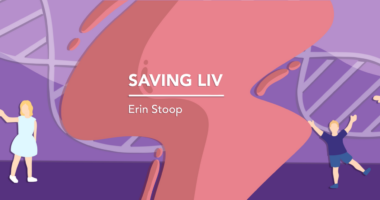Feeding Tips for Children With Sanfilippo Syndrome

Disabilities due to Sanfilippo syndrome can lead to challenges with eating and drinking that can make feeding patients difficult.
The rare genetic disorder, also known as mucopolysaccharidosis type III (MPS III), results in an accumulation of complex sugar molecules called glycosaminoglycans (GAGs), or mucopolysaccharides. This accumulation can cause some developmental disabilities in the early stages of the disease and lead to loss of motor functions in the later stages.
The following includes tips to help parents and caregivers with feeding patients with Sanfilippo syndrome.
Food choice
There is no scientific evidence suggesting that a particular diet may improve symptoms of Sanfilippo syndrome. Some parents have reported that reducing milk, dairy, sugar, and artificial ingredients and colors helped with symptoms such as excess mucus, diarrhea, and hyperactivity.
For patients with diarrhea, it may be helpful to decrease the amount of roughage, or fibrous foods, or add probiotic foods if the diarrhea is linked to antibiotic usage.
As patients get older and lose more muscle function they may start to get constipated. In this case, adding more high fiber foods into the diet may help.
Soft or pureed foods might also be necessary for individuals with Sanfilippo who don’t progress to eating foods that require chewing or who lose this ability as the disease progresses.
Difficulty swallowing
As patients get older and tend to regress in their abilities, some may have difficulty swallowing, known as dysphagia. People with dysphagia are at a higher risk of choking or aspirating (getting food and drink into their lungs).
To lower the risk of these complications, patients should sit upright while eating and remain upright for at least half an hour afterward. Distractions should be removed so that the patient can focus on eating and drinking slowly. It also may help if the caregiver gently massages under the patient’s chin and then down the person’s throat while eating.
If a patient begins to choke, he or she should be laid down in such a way that the head is lower than the body. The caregiver should then pat the patient firmly on the back with the hand several times to try and dislodge the food. The patient should not be upright while trying to clear the airway as it can cause him or her to aspirate the food. After a choking episode, it is important to watch for signs of fever in the next few days. A fever could mean that some food or liquid may have reached the lungs and could be causing pneumonia.
Drooling
People with Sanfilippo syndrome sometimes have enlarged tongues. This can lead to drooling, and to difficulty keeping food or liquids in their mouths. Difficulties with swallowing also can result in increased drooling. Bibs and napkins can be helpful for wiping and catching drool. However, it may be necessary to also use suction as swallowing becomes more difficult.
Drooling and dysphagia may improve with botulinum toxin injections into the salivary glands. Such botox injections temporarily prevent a muscle from moving.
Tube feeding
As the disease progresses, feeding and swallowing will become more and more difficult. In such cases, it may be necessary to switch to tube feeding in order to ensure the patient receives enough nutrition. There are two main choices for tube feeding: nasogastric and gastrostomy.
Nasogastric (NG) feeding tubes run through the nose and down into the stomach. A gastrostomy tube (G-tube) involves surgery to place an opening directly into the stomach through the abdomen. Each option comes with its own benefits and drawbacks. NG tubes are easier to place and remove but can cause irritation and blockage to the airways. G-tubes, on the other hand, are more stable. However, they come with the risks associated with surgery and the potential risk of infection.
Last updated: Sept. 15, 2020
***
Sanfilippo Syndrome News is strictly a news and information website about the disease. It does not provide medical advice, diagnosis, or treatment. This content is not intended to be a substitute for professional medical advice, diagnosis, or treatment. Always seek the advice of your physician or other qualified health provider with any questions you may have regarding a medical condition. Never disregard professional medical advice or delay in seeking it because of something you have read on this website.






